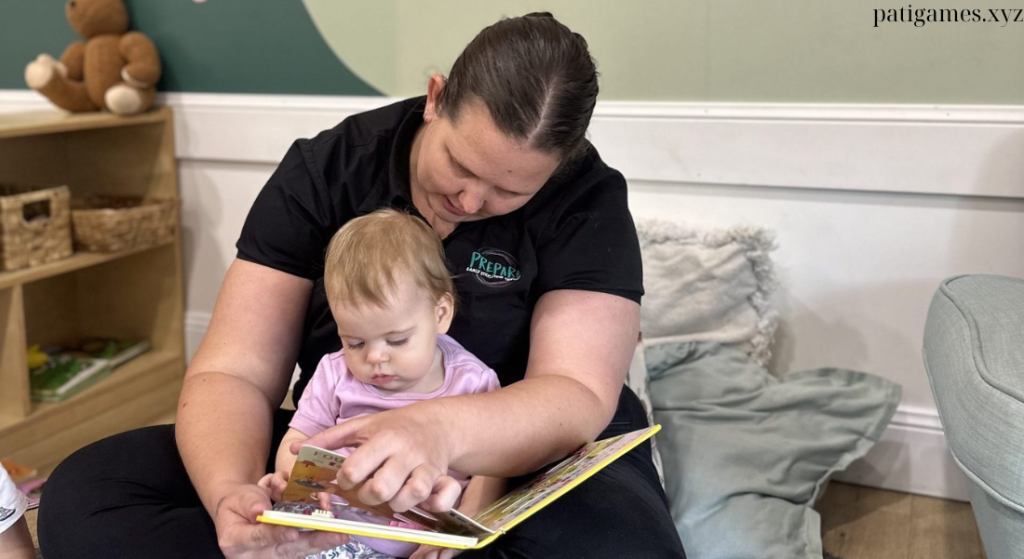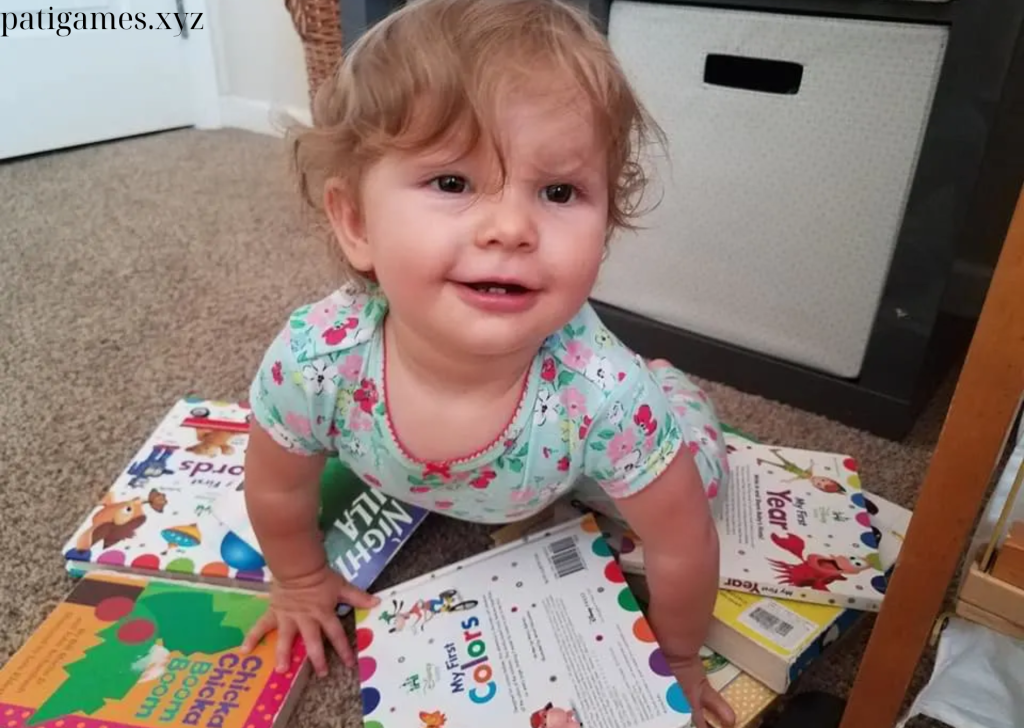Reading to newborns is one of the most magical ways to bond while fostering early development. Even the youngest listeners can benefit from hearing stories, exploring colorful illustrations, and engaging with simple narratives. In 2024, a wonderful selection of children’s books for newborn readers is capturing the hearts of parents and little ones alike. This guide will highlight the top choices for this year, perfect for creating memorable storytime moments with your newborn.

Table of Contents
ToggleKey Highlights
- Introduction to Newborn Books in 2024: Why this year’s selections are perfect for early readers.
- Top Children’s Books for Newborns: Must-have titles that captivate newborns.
- Benefits of Reading to Newborns: How early reading supports development.
- Choosing the Right Book: Tips for selecting the best story for newborn readers.
- Enhancing Storytime for Newborns: Making reading engaging and enjoyable for your baby.
- Creating a Reading Routine: How to make storytime a daily habit with your newborn.
1. Introduction to Newborn Books in 2024: Captivating Tiny Minds
The best children’s books for newborns in 2024 focus on simplicity, vibrant visuals, and rhythmic language to engage even the youngest listeners. These books are specifically designed to stimulate a newborn’s developing senses, helping them recognize shapes, colors, and sounds. This year’s collection brings fresh stories that are as delightful for parents as they are for babies.
Why 2024 Books Are Ideal for Newborn Readers
- High-Contrast Illustrations: Many books feature bold, high-contrast images that are perfect for developing eyes.
- Simple Text: Short, repetitive phrases make it easy for newborns to follow along.
- Sensory Elements: Interactive features like textures and flaps encourage touch and exploration.
2. Top Children’s Books for Newborns: Must-Have Titles That Captivate Newborns
Here are some of the best children’s books for newborns in 2024, designed to make storytime both fun and educational:
“Hello, Baby!” by Sophie Cooper
This charming board book is perfect for newborns, with high-contrast black-and-white illustrations that capture tiny attention spans. “Hello, Baby!” is designed to stimulate a newborn’s vision, featuring simple shapes and patterns that are easy for babies to recognize.
- Age Range: 0 – 6 months
- Why It’s Great: Engages newborns with bold, high-contrast visuals that are perfect for early development.
- Illustrations: Simple, eye-catching designs that encourage visual tracking.
“Peek-a-Boo, I See You!” by Emily Foster
“Peek-a-Boo, I See You!” is an engaging lift-the-flap book that introduces newborns to the classic game of peek-a-boo. Each page has interactive flaps that babies can lift, revealing playful illustrations underneath.
- Age Range: 0 – 12 months
- Why It’s Great: Encourages curiosity and fine motor skills with interactive flaps.
- Illustrations: Colorful and friendly images that delight both babies and parents.
“Goodnight, Little Star” by Oliver White
This gentle bedtime story is ideal for winding down before sleep. “Goodnight, Little Star” features soothing rhymes and soft illustrations of nighttime scenes that create a calming atmosphere, perfect for bedtime routines.
- Age Range: 0 – 12 months
- Why It’s Great: A calming bedtime story that helps establish a nighttime reading habit.
- Illustrations: Soft and dreamy images that promote relaxation and sleep.
“Touch and Feel: Animals” by Harper Evans
“Touch and Feel: Animals” is a sensory board book that introduces babies to various animals through touch. Each page includes different textures that babies can feel, encouraging sensory exploration.
- Age Range: 0 – 12 months
- Why It’s Great: Stimulates sensory development with textures like soft fur, bumpy skin, and smooth feathers.
- Illustrations: Realistic animal images combined with touchable textures for a multisensory experience.
“Baby’s First Words” by Grace Lee
“Baby’s First Words” is a bright and engaging book that introduces common words with colorful illustrations. The book is designed to encourage early language development, helping babies recognize familiar objects and sounds.
- Age Range: 0 – 12 months
- Why It’s Great: Encourages early language skills with simple words and visuals.
- Illustrations: Bold and colorful images that are easy for newborns to understand.
3. Benefits of Reading to Newborns: How Early Reading Supports Development
Reading to your newborn isn’t just about entertainment; it’s a crucial part of early development. Here’s how children’s books for newborn readers can benefit your baby:
Supports Visual Development
Books with high-contrast illustrations help newborns focus and track objects, supporting their visual development. As their eyesight sharpens, they’ll begin to recognize different shapes and patterns.
Builds Early Language Skills
Hearing stories read aloud helps babies learn the sounds and rhythms of language, laying the groundwork for future language skills. Repetitive phrases and rhyming words are particularly effective in capturing a newborn’s attention.
Encourages Bonding
Storytime is a wonderful bonding experience for parents and babies. Reading aloud provides comfort and security, fostering emotional connections that are important for a baby’s development.
Stimulates Sensory Exploration
Interactive books that include textures, flaps, or mirrors encourage babies to explore with their senses. These elements stimulate curiosity and help develop fine motor skills as babies reach out to touch and feel.
4. Choosing the Right Book: Tips for Selecting the Best Story for Newborn Readers
Finding the perfect book for your newborn can make storytime more engaging and enjoyable. Here are some tips to help you choose:
Focus on High-Contrast Images
For the youngest readers, books with high-contrast images—often black, white, and red—are the easiest for them to see. These visuals help with focusing and visual tracking.
Look for Simple Text and Rhymes
Books with short, repetitive text and rhymes are ideal for newborns. The rhythmic patterns can soothe babies and make it easier for them to follow along with the story.
Choose Interactive Books
Books with touch-and-feel elements, flaps, or mirrors add an interactive dimension to storytime. These sensory elements keep babies engaged and encourage them to explore the pages.
Consider Durability
Opt for board books that are sturdy and easy to clean. Babies love to explore with their hands (and mouths), so durable books are a must for this age group.
5. Enhancing Storytime for Newborns: Making Reading Engaging and Enjoyable for Your Baby
Creating an engaging storytime experience can make a significant difference in how your baby interacts with books. Here are some tips:
Use Gentle, Soothing Voices
Use a soft, calming voice when reading to your newborn. Change your tone to match the mood of the story—gentle for bedtime and cheerful for playtime.
Point to Illustrations
Point to and describe the images in the book as you read. This helps your baby connect the words they hear with the pictures they see, supporting their cognitive development.
Mimic Sounds and Actions
Make storytime more interactive by mimicking the sounds or actions described in the book. Use your hands to point, clap, or wave along with the story to capture your baby’s attention.
Incorporate Soft Lighting
Create a cozy reading environment with soft lighting, such as a warm lamp or a dim nightlight. This makes the space feel comforting and helps your baby focus on the book.
6. Creating a Reading Routine: How to Make Storytime a Daily Habit with Your Newborn
Developing a reading routine with your newborn can have long-term benefits for their development. Here’s how to make reading a regular part of your day:
Establish a Bedtime Storytime
Include storytime in your baby’s bedtime routine. Choose calming books like “Goodnight, Little Star” to signal that it’s time to wind down and prepare for sleep.
Read During Quiet Moments
Look for opportunities to read during quiet times, such as after feeding or during a peaceful afternoon. These moments provide a chance to bond and enjoy a story together.
Keep Books Within Reach
Place books in a spot that’s easily accessible, such as a bookshelf in the nursery or a basket near the rocking chair. Having books readily available makes it easier to incorporate reading into your daily routine.
Let Your Baby Choose
As your baby gets older, encourage them to pick out books themselves. Offering a choice fosters a love of reading and lets them take part in the storytime experience.
Conclusion
The best children’s books of 2024 for newborn readers are designed to make storytime magical and meaningful. From high-contrast illustrations to engaging textures and soothing stories, these books capture the attention of the youngest listeners while supporting their development. Introducing your newborn to the joy of reading not only helps them grow and learn but also creates precious bonding moments that you’ll both cherish. Explore the top picks of 2024 and give the gift of imagination, wonder, and comfort through the power of stories.
FAQ
What types of children’s books are best for newborns?
High-contrast board books, touch-and-feel books, and simple stories with repetitive text are ideal for newborns, as they stimulate visual and sensory development.
Why are high-contrast illustrations important for newborns?
Newborns have limited vision in the early months, and high-contrast illustrations are easier for them to see and track, supporting early visual development.
How can I make storytime engaging for my newborn?
Use gentle voices, point to illustrations, mimic sounds, and create a cozy reading environment to make storytime engaging and enjoyable for your baby.
What’s a good way to incorporate reading into a newborn’s routine?
Include reading as part of a bedtime routine or during quiet moments of the day. Keep books accessible and let your baby explore them as they grow.
Are sensory books beneficial for newborns?
Yes, sensory books with textures, flaps, or mirrors encourage touch and exploration, which are essential for stimulating sensory development in newborns.

